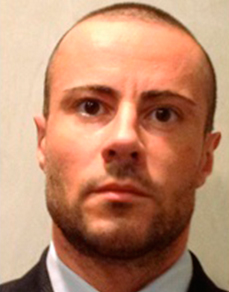16 patients were recruited with a total number of 20 implants inserted with the M.I.S.E. protocol.
The patients recruited were asking for implant rehabilitation of partial edentulism in the rear sectors of the upper maxillary. All the patients selected presented, in the implant seat, a reduced height of the bone crest, evaluated by radiographic control and between 5 and 10 mm. All the operations were carried out following a standardised protocol, with the incision of a mucoperiosteal flap, the elevation of the maxillary sinus using the M.I.S.E. kit, the insertion where necessary of biomaterial in granules with a base of tricalcium sulphate and at the same time the insertion of the implant screw. The increase of bone height achieved with the elevation of the maxillary sinus floor is between 1.5 mm and 5 mm. In all cases the implants remained submerged for 6 months, evaluated by radiography on reopening and loaded with the final prosthesis within the next 30 days.
The height of the bone crest, the degree of immersion of the implant and the distribution of the inserted biomaterial were all evaluated by endoral X-rays performed with the centring device before the operation, after the operation, and at a distance of 6 months and 5 years.
This study evaluated the degree of implant survival after 5 years of implants inserted with the technique of crestal lifting of the maxillary sinus carried out with the M.I.S.E. kit, the percentage of implant surface immersed in the bone at time 0, after 6 months and after 5 years. The millimetric measurement was taken on a radiography in scale 1:1 with the aid, where possible, of calibrated digital software.
In the cases considered the elevation of the sinus floor is between 1.5 mm and 5 mm, the minimum crest height at the time of the operation is 5 mm. At 5 years the implant survival rate in the cases considered was 100%. At time 0, the metric analysis of the bone/implant interface is carried out and the implant surface in contact with the bone in the portion of elevated sinus is considered. The same analysis is repeated at the subsequent controls, until 5 years after the operation. 16 out of the 20 cases considered present total maintaining of the infrasinusal bone/implant contact surface. 4 cases out of 20 present vertical bone reabsorption, and therefore an exposure of the apical portion of the implant in the maxillary sinus, between 0.5 and 1 mm. Consequently, in the cases considered, the mean loss of vertical bone, grafted with the M.I.S.E. surgical technique, was 7% after 5 years.
The results of this study lead to two conclusions:
- As far as can be found through two-dimensional radiographic survey, the M.I.S.E. technique is reliable, with a well defined protocol and repeatable in the vertical regeneration of class I and II sinus defects.
- The increase of vertical bone volume obtained is stable in the control after 5 years, with a reduced quantity of vertical bone reabsorption, comparable in quality to that obtained with the method of elevation of the maxillary sinus floor with a side window.


